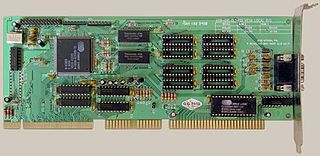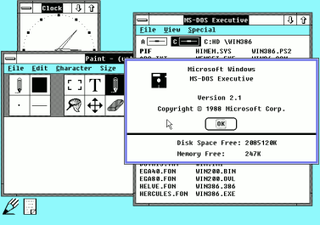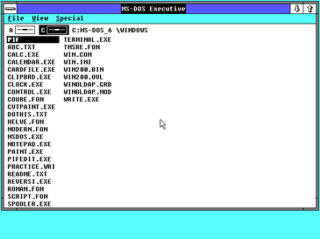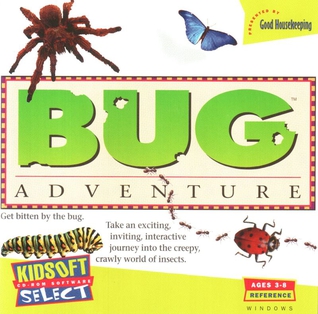 | |
| Developer(s) | The Learning Company |
|---|---|
| Publisher(s) | The Learning Company |
| Platform(s) | DOS |
| Release | 1992 |
| Genre(s) | Educational |
Time Riders in American History is a history-themed, educational video game for DOS released by The Learning Company in 1992. [1]
 | |
| Developer(s) | The Learning Company |
|---|---|
| Publisher(s) | The Learning Company |
| Platform(s) | DOS |
| Release | 1992 |
| Genre(s) | Educational |
Time Riders in American History is a history-themed, educational video game for DOS released by The Learning Company in 1992. [1]
The game's plot revolves around the notorious Dr. Thanatopsis Dread, who is trying to take over the world. To lend credibility to his bid for world domination, Dread manipulated historical records to make it seem like his ancestors were responsible for major accomplishments in American history from 1492 to 1905. Players must travel through time to correct these historical inaccuracies and ensure that the true American history is preserved and Dread is defeated.
The game "features abundant in-game help, lavish production values, compelling cutscenes and scores of easter eggs." [1]
MobyGames says the game plays "much like an enhanced remake of Where in Time is Carmen Sandiego?". [1] Home of the Underdogs wrote "Another outstanding edutainment title from The Learning Company, Time Riders in American History teaches history of the United States in such a captivating way that kids will not realize that they're learning something... Overall, another great underdog that was sadly overlooked. Thumbs up!" [2] Compute! wrote that the title is a "one well-rounded text adventure". [3] The New York Times felt it was "riding the current historical-games wave". [4] Deseret deemed it similar in concept to Davidson's Headline Harry and the Great Paper Race . [5]
PCGames nominated Time Riders in American History for its award for the best children's game of 1992. [6]

Super VGA (SVGA) is a broad term that covers a wide range of computer display standards that extended IBM's VGA specification.
Kerio Technologies, Inc. is a former technology company specializing in collaboration software and unified threat management for small and medium organizations. Founded in 1997, Kerio is headquartered in San Jose, California. In January 2017, GFI Software acquired Kerio. GFI Software is owned by Aurea SMB Solutions, which in turn is owned by ESW Capital Group.
Shacknews is an American video game journalism website founded in 1996. It that publishes news articles, reviews, and cheat codes.

Directory Opus is a file manager program, originally written for the Amiga computer system in the early to mid-1990s. Commercial development on the version for the Amiga ceased in 1997. Directory Opus is still being actively developed and sold for the Microsoft Windows operating system by GPSoftware and there are open source releases of Directory Opus 4 and 5 for Amiga.

Imaging for Windows from Global 360 is document imaging software. Earlier versions of Imaging for Windows were available for Windows 95 OSR2, Windows 98, Windows Me, Windows NT 4.0, Windows 2000. Global360 Imaging for Windows is the upgrade to this Imaging software, which was discontinued as of Windows XP. Its image viewing, editing and scanning functions are superseded by Windows Picture and Fax Viewer and Microsoft Paint, both of which are based on GDI+ in Windows XP. However, the multi-page picture editing functions are gone with the Imaging software.
Interactive Systems Corporation was a US-based software company and the first vendor of the Unix operating system outside AT&T, operating from Santa Monica, California. It was founded in 1977 by Peter G. Weiner, a RAND Corporation researcher who had previously founded the Yale University computer science department and had been the Ph.D. advisor to Brian Kernighan, one of Unix's developers at AT&T. Weiner was joined by Heinz Lycklama, also a veteran of AT&T and previously the author of a Version 6 Unix port to the LSI-11 computer.
Meeting Maker is a cross-platform personal calendar and group scheduling software application from PeopleCube. First released in 1991 for Macintosh by ON Technology, support for other platforms followed in 1993 with Meeting Maker XP. Alongside Windows and Mac, native clients were released for OS/2 and Solaris, and later also for other platforms. Some support was also introduced for mobile platforms like Apple Newton, PalmPilot and Windows CE. Although powerful, its user interface - aiming at uniformity across multiple platforms — was criticized as weak and not supporting all features of target platforms.
Aldus PhotoStyler was a graphics software program developed by the Taiwanese company Ulead. Released in June 1991 as the first 24 bit image editor for Windows, it was bought the same year by the Aldus Prepress group. Its main competition was Adobe Photoshop. Version 2.0 introduced a new user interface and improved color calibration. PhotoStyler SE - lacking some features of the version 2.0 - was bundled with scanners like HP ScanJet. The product disappeared from the Adobe product line after Adobe acquired Aldus in 1994.

Windows 2.1 is a release of Microsoft Windows. It was released to manufacturing on May 27, 1988, as a successor to Windows 2.0.

Windows 3.1 is a major release of Microsoft Windows. It was released to manufacturing on April 6, 1992, as a successor to Windows 3.0. Like its predecessors, the Windows 3.1 series run as a shell on top of MS-DOS; it was the last Windows 16-bit operating environment as all future versions of Windows had moved to 32-bit.

Windows 2.0 is a major release of Microsoft Windows, a family of graphical operating systems for personal computers developed by Microsoft. It was released to manufacturing on December 9, 1987, as a successor to Windows 1.0.

Where in Space Is Carmen Sandiego? is an educational video game by Broderbund and Electronic Arts.

Laplink is a proprietary software that was developed by Mark Eppley and sold by Traveling Software. First available in 1983, LapLink was used to synchronize, copy, or move, files between two PCs, in an era before local area networks, using the parallel port and a LapLink cable or serial port and a null modem cable or USB and a USB ad hoc network cable. Traveling Software is now known as LapLink Software, Inc., and their main software is now the PCmover.
PerfectDisk is a defragmentation software product for Windows developed by Raxco.
Diabolical Digits is a mathematical puzzle video game designed by French puzzle master Pierre Berloquin and developed by Créalude for Windows and Macintosh. It was originally published in France by CFI in March 1995 as Digi Folies. A North American version was distributed by Millennium Media Group and Dell Magazines at the end of the year.
A to Zap! Featuring the Sunbuddies is an educational video game by American studio ImageBuilder Software released in 1995 for Windows and Macintosh and released by Sunburst Communications.

Bug Adventure is an educational video game about bugs by Knowledge Adventure. It was released in 1994 for MS-DOS and Macintosh, then for Windows in 2015. The interactive nature almanac and encyclopedia presents facts and media related to bugs. It includes a quiz game.